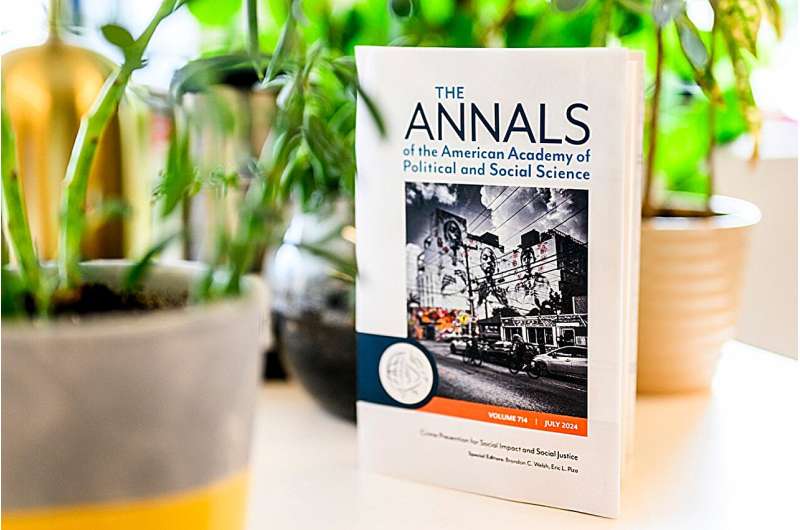Science
Researchers Advocate for Social Justice in Crime Prevention Strategies

Researchers from Northeastern University are calling for increased emphasis on social impact and social justice in crime prevention initiatives. Their findings suggest that programs targeting early childhood education and improvements in community infrastructure can effectively reduce crime rates without relying on traditional justice systems. This approach aims to address the root causes of crime, enhancing both community safety and overall social equity.
In a recent publication edited by Brandon Welsh and Eric Piza, the Crime Prevention Lab co-directors emphasize the importance of integrating social justice into crime prevention strategies. Welsh, a dean’s professor of criminology, highlights that “high-quality early preschool” serves as an effective model for reducing crime through developmental support. He notes that enhancing environmental design—such as improving street lighting and visibility in public spaces—also plays a vital role.
The publication, featured in the Annals of the American Academy of Political and Social Science, outlines a new framework for implementing evidence-based and cost-effective crime prevention. Welsh explains that this framework focuses on the dual goals of social impact and social justice, advocating for the equitable distribution of resources and fostering a perception of fairness among community members.
Innovative Strategies for Crime Prevention
The researchers categorize effective crime prevention strategies into two main types: community and developmental crime prevention, and environmental or situational crime prevention. Community initiatives may include after-school programs and child social skills training, while environmental strategies involve measures like surveillance cameras and improved street lighting.
By integrating these strategies with proactive policing, the researchers believe communities can significantly reduce crime rates across U.S. cities. Nonetheless, Welsh cautions that merely implementing crime prevention measures does not automatically lead to improved social justice outcomes. “Neither social impact nor social justice are a natural byproduct of crime prevention,” he states.
The Path Forward
Piza adds that the misconception that lowering crime rates and improving social justice are mutually exclusive hinders progress. He asserts that there is a clear pathway for achieving both goals simultaneously. The articles compiled in the recent volume illustrate how such an integrated approach can be effectively executed.
The researchers’ call to action highlights the need for sustained community engagement and collaboration among stakeholders to ensure that crime prevention efforts are both effective and equitable. The work done at Northeastern University sets a precedent for future research and policy-making aimed at creating safer, more just communities.
Overall, the findings underscore the necessity of a holistic approach to crime prevention that prioritizes social impact alongside safety, ultimately fostering a healthier society for all.
-

 World5 days ago
World5 days agoCoronation Street’s Shocking Murder Twist Reveals Family Secrets
-

 Entertainment4 months ago
Entertainment4 months agoKate Garraway Sells £2 Million Home Amid Financial Struggles
-

 Entertainment3 months ago
Entertainment3 months agoAnn Ming Reflects on ITV’s ‘I Fought the Law’ Drama
-

 Entertainment3 days ago
Entertainment3 days agoAndrew Pierce Confirms Departure from ITV’s Good Morning Britain
-

 Health3 months ago
Health3 months agoKatie Price Faces New Health Concerns After Cancer Symptoms Resurface
-

 Entertainment4 weeks ago
Entertainment4 weeks agoCoronation Street Fans React as Todd Faces Heartbreaking Choice
-

 World4 weeks ago
World4 weeks agoBailey Announces Heartbreaking Split from Rebecca After Reunion
-

 Entertainment1 week ago
Entertainment1 week agoTwo Stars Evicted from I’m A Celebrity Just Days Before Finale
-

 World1 week ago
World1 week agoKevin Sinfield Exceeds Fundraising Goal Ahead of Final Marathons
-

 Entertainment3 months ago
Entertainment3 months agoCoronation Street’s Carl Webster Faces Trouble with New Affairs
-

 Entertainment3 months ago
Entertainment3 months agoWhere is Tinder Swindler Simon Leviev? Latest Updates Revealed
-

 Entertainment4 months ago
Entertainment4 months agoMarkiplier Addresses AI Controversy During Livestream Response











